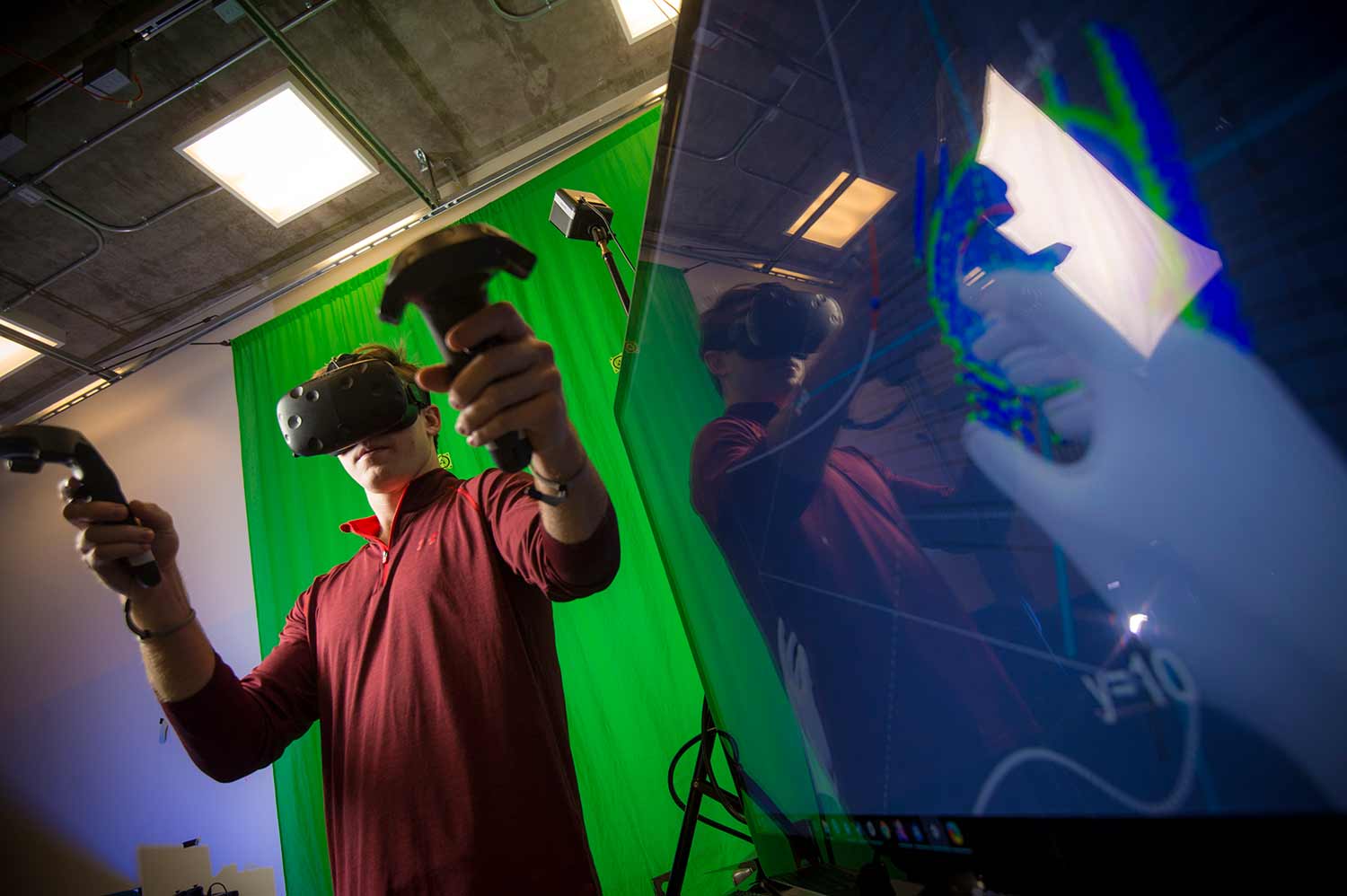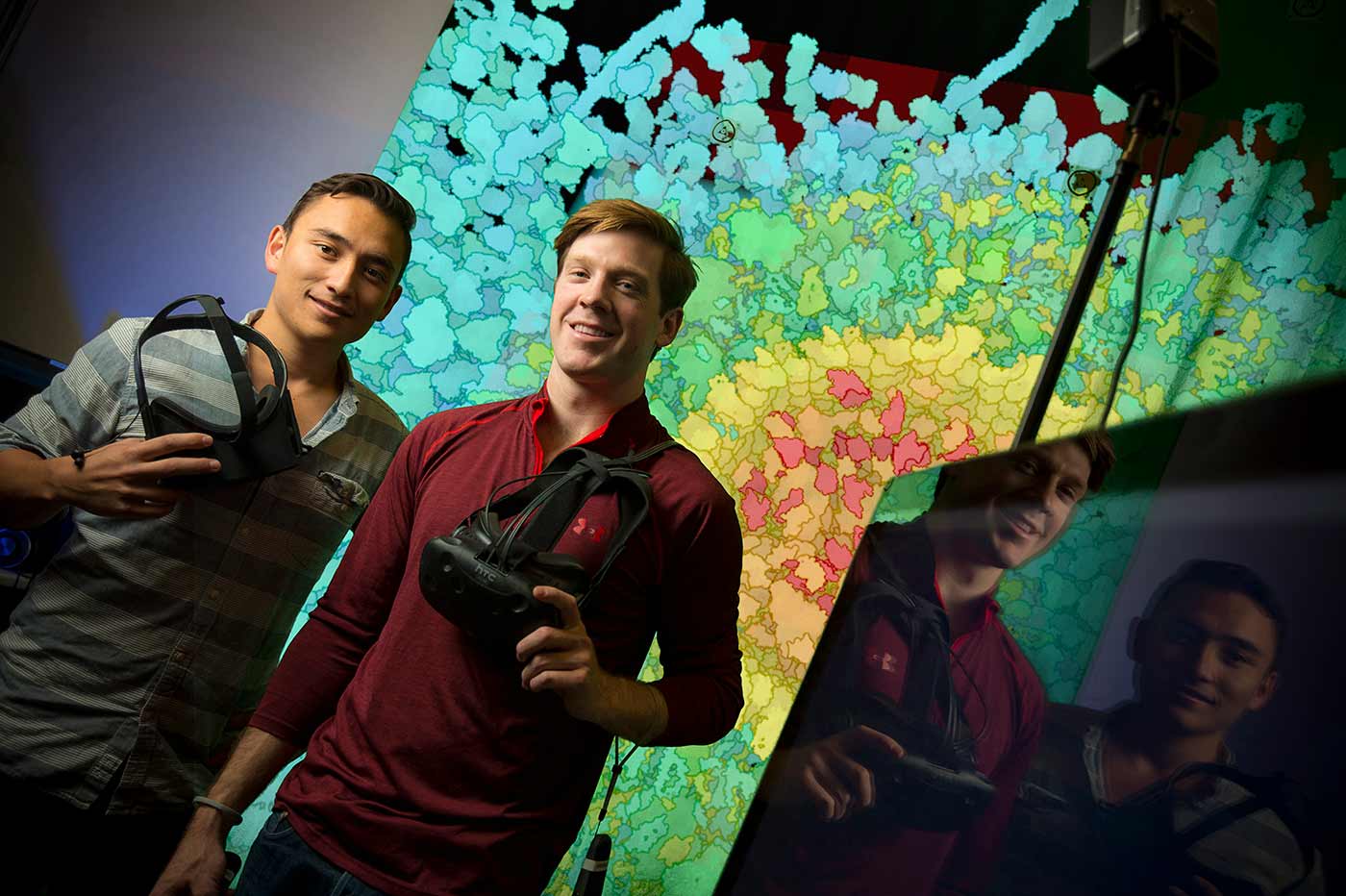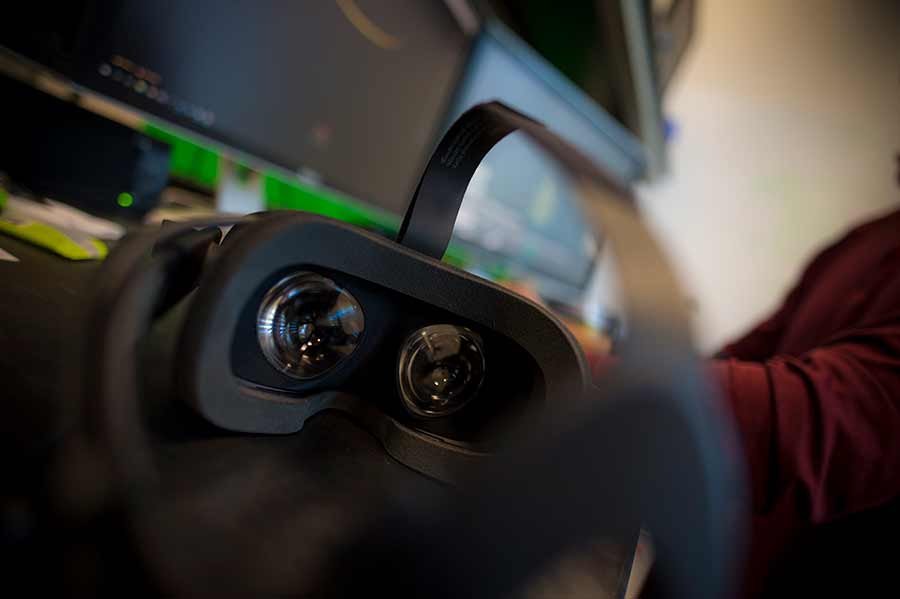By:
- Deborah L. Jude
Published Date
By:
- Deborah L. Jude
Share This:

Steven McCloskey, co-founder of a new virtual reality startup, manipulates objects in an immersive environment. Photos by Erik Jepsen/UC San Diego Publications
Alums Take on Emerging Field of Nanoscale Virtual Reality
Virtual reality (VR) headsets such as the Oculus Rift will line store shelves this holiday season, and UC San Diego alumni startup Nanome, Inc. plans to capitalize on that by creating VR apps for the consumer market, the classroom, and beyond.
Nanome co-founder Steven McCloskey was part of the first graduating class of NanoEngineering at UC San Diego when he received his bachelor’s degree in 2015. Frustrated by the lack of tools available to nanoengineers for complex 3D modeling and simulation at the nanoscale, he set out to try and rectify the problem. He and colleagues built the first molecular visualization, modeling and simulation tool for today’s VR platforms called nano-one. The application allows users to build molecules with carbon, oxygen, nitrogen and hydrogen atoms.
“Our goal is to provide the tools necessary to help people build new proteins and molecules and eventually also simulate their interactions,” said McCloskey. “You can see how the world works at this fundamental level, and re-make it.”
Why VR? Everything is made out of atoms—cosmetics, computer hardware, everything. Take a chair, for example. A chair can’t just look like a chair, it has to act like one. If you’re going to be manipulating things in 3D, you also need to be able to change the material properties of an object, which is dictated by structures at the nanoscale level.
McCloskey said he believes nanoscale virtual reality represents the future of engineering.
“UC San Diego is where this has to happen—we have a NanoEngineering department, VR experts, Protein Databank, interdisciplinary researchers, and we’re located in Biotech Beach,” he said.
Nano-one is now being tested in the UC San Diego Chemistry Department and in the consumer market for workflow integration, modeling precision, and optimal pattern-recognition and discovery.
As nano-one was being developed, McCloskey and his colleagues had an idea for another VR tool that would help engineers with math.
“When I was in Vector Calculus as a NanoEngineering major, I wanted better 3D graphics to go along with the instruction,” said McCloskey.

Nanome co-founders Steven McCloskey and Keita Funakawa
The team piloted a VR 3D-graphing calculator in Math20E over the summer. The calculator, called Calcflow, features intuitive ways for students to learn the foundations of vector calculus.
“When you put on the headset, you can manipulate vectors with your hands, and explore vector addition and cross product,” said Nanome co-founder Keita Funakawa, who received a bachelor’s degree from UC San Diego in Management Science in 2016. “You can see and feel a double integral of a sinusoidal graph in 3D, a mobius strip and its normal, and spherical coordinates—even create your own parametrized function and vector field!”
If all of this sounds like another language to you, the calculator also features presets and sample problems, and allows users to take notes within the program.
Nano-one and Calcflow launched in the STEAM store (VR equivalent of an app story) Nov. 10, and are finalists for CONNECT’s Most Innovative New Product Awards in December.
The Making of a Company
At first, McCloskey thought about creating a video game to help nanoengineers visualize their research, but then he came across the Oculus Rift.
“A lightbulb went off in my head,” he said. “I knew that the immersive environment VR creates was the future of nanoengineering.”

Virtual reality headset
At the same time as McCloskey was toying around with the idea of VR as a tool for nanoengineering, Funakawa was innovating in another field.
“Film is my passion,” said Funakawa. “Like Steven, I knew that my work was limited by the tools that are available in my field.”
Funakawa and McCloskey found this common ground in April of 2015 at a film festival put on by UC San Diego’s ArtPower, where McCloskey was demonstrating an early stage prototype of a virtual lab that he built with a few of his classmates.
“Once I saw Steven’s VR demo, I was hooked,” said Funakawa.
Nanome incorporated in August of 2016 and has grown to a team of three developers and nine interns.
Now, they are looking to customize their tools for industry.
Share This:
Stay in the Know
Keep up with all the latest from UC San Diego. Subscribe to the newsletter today.



